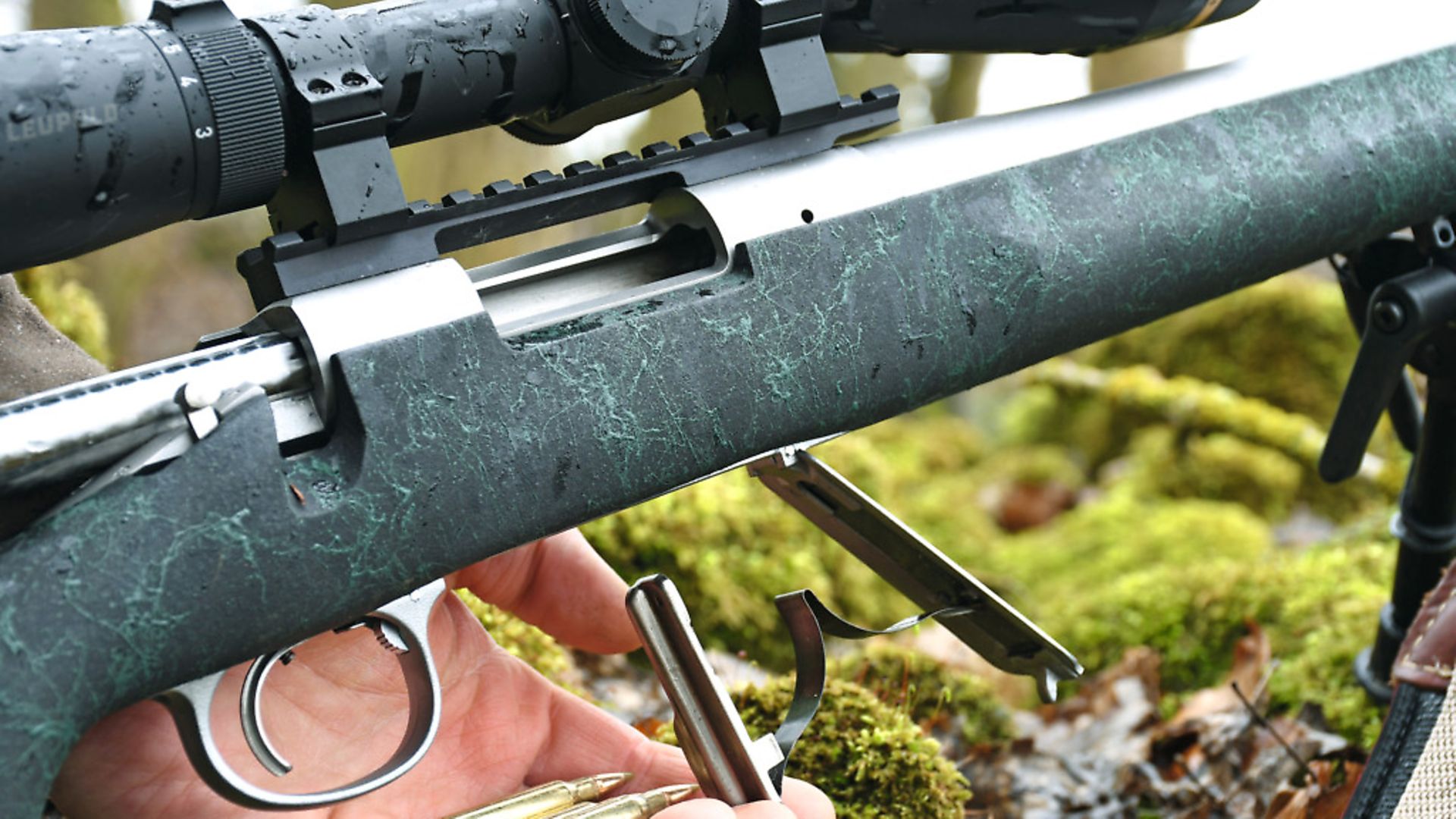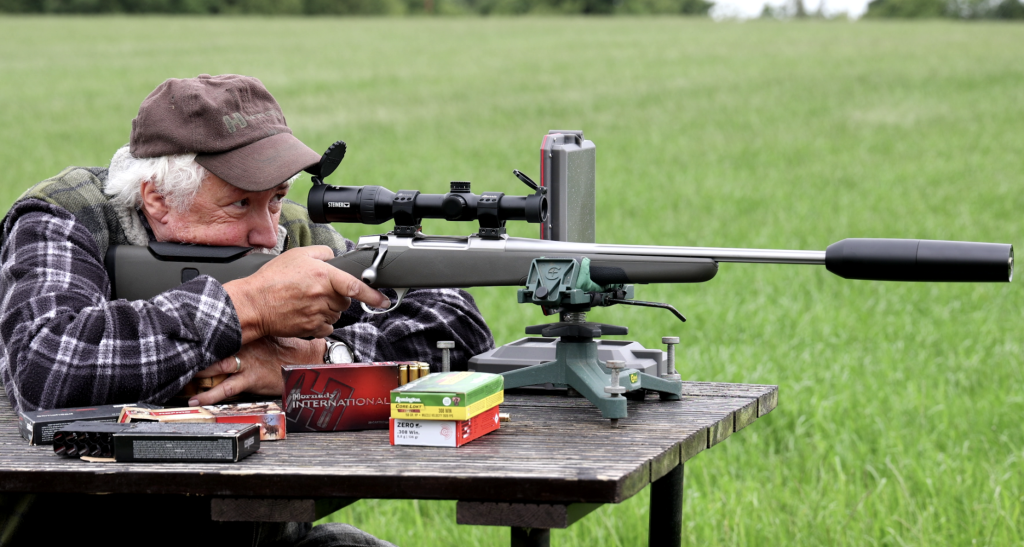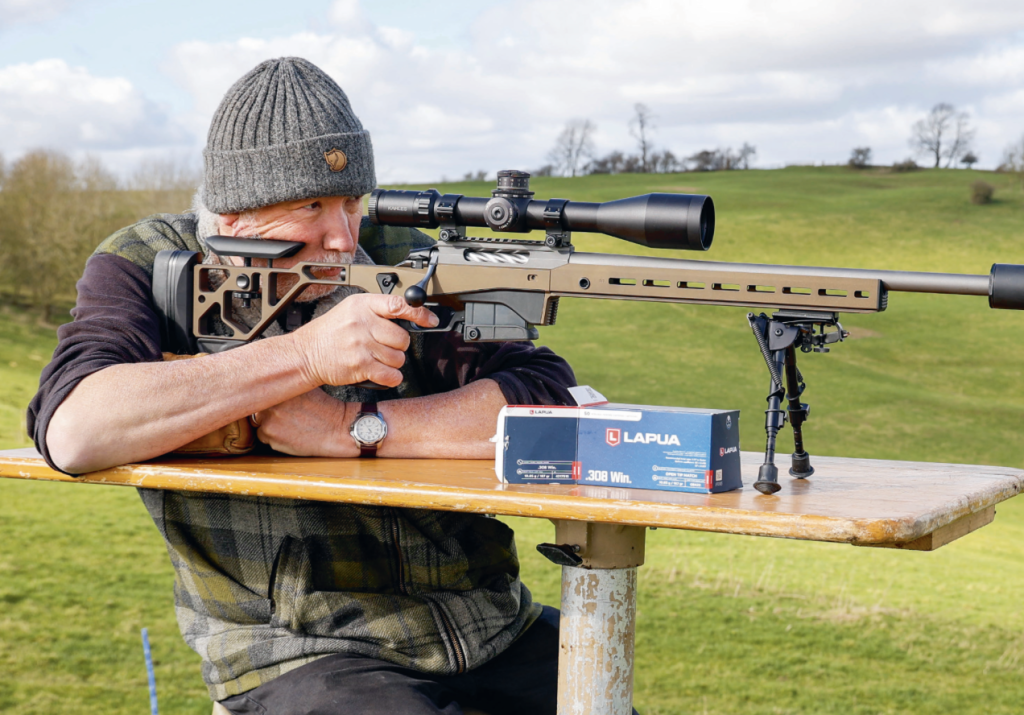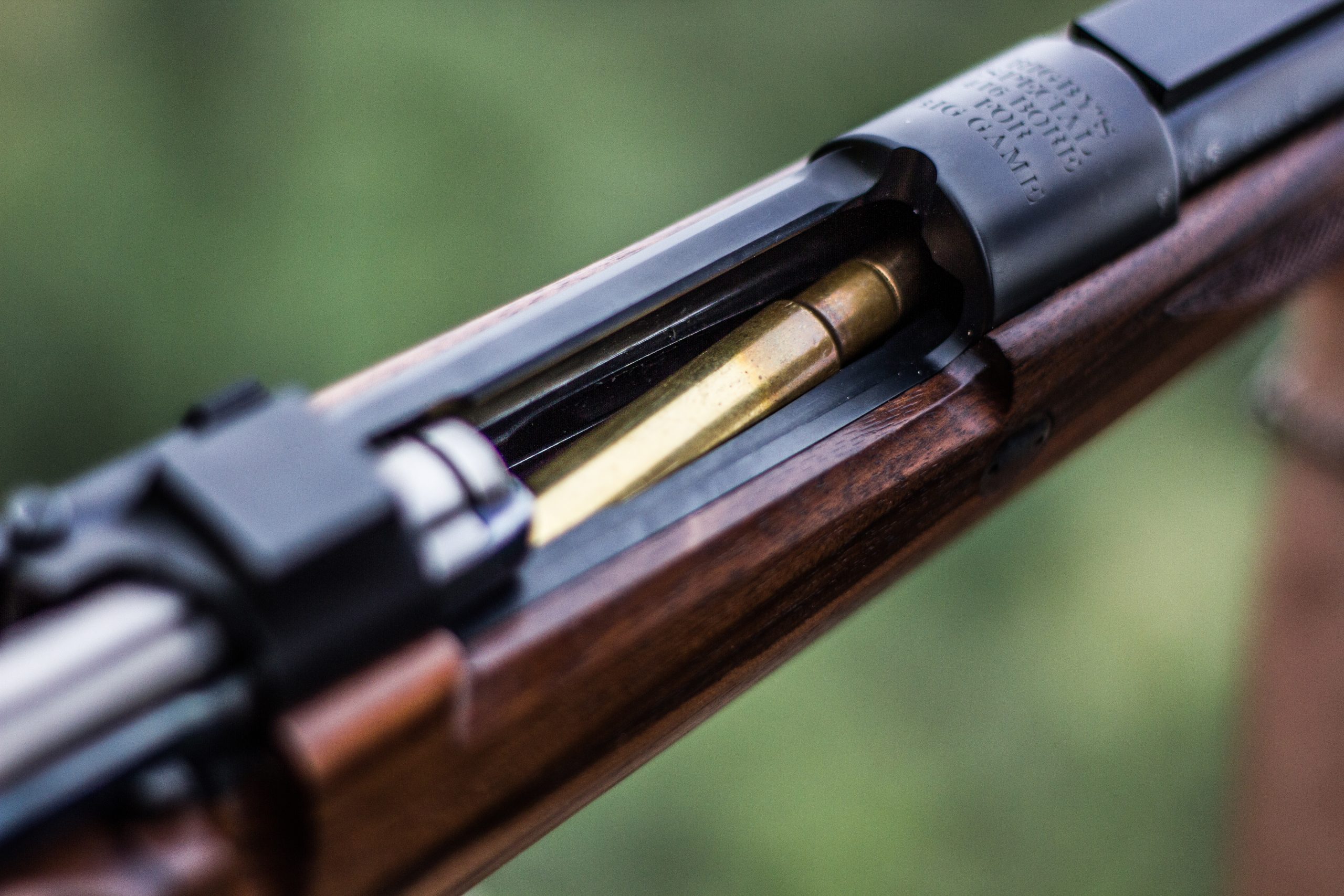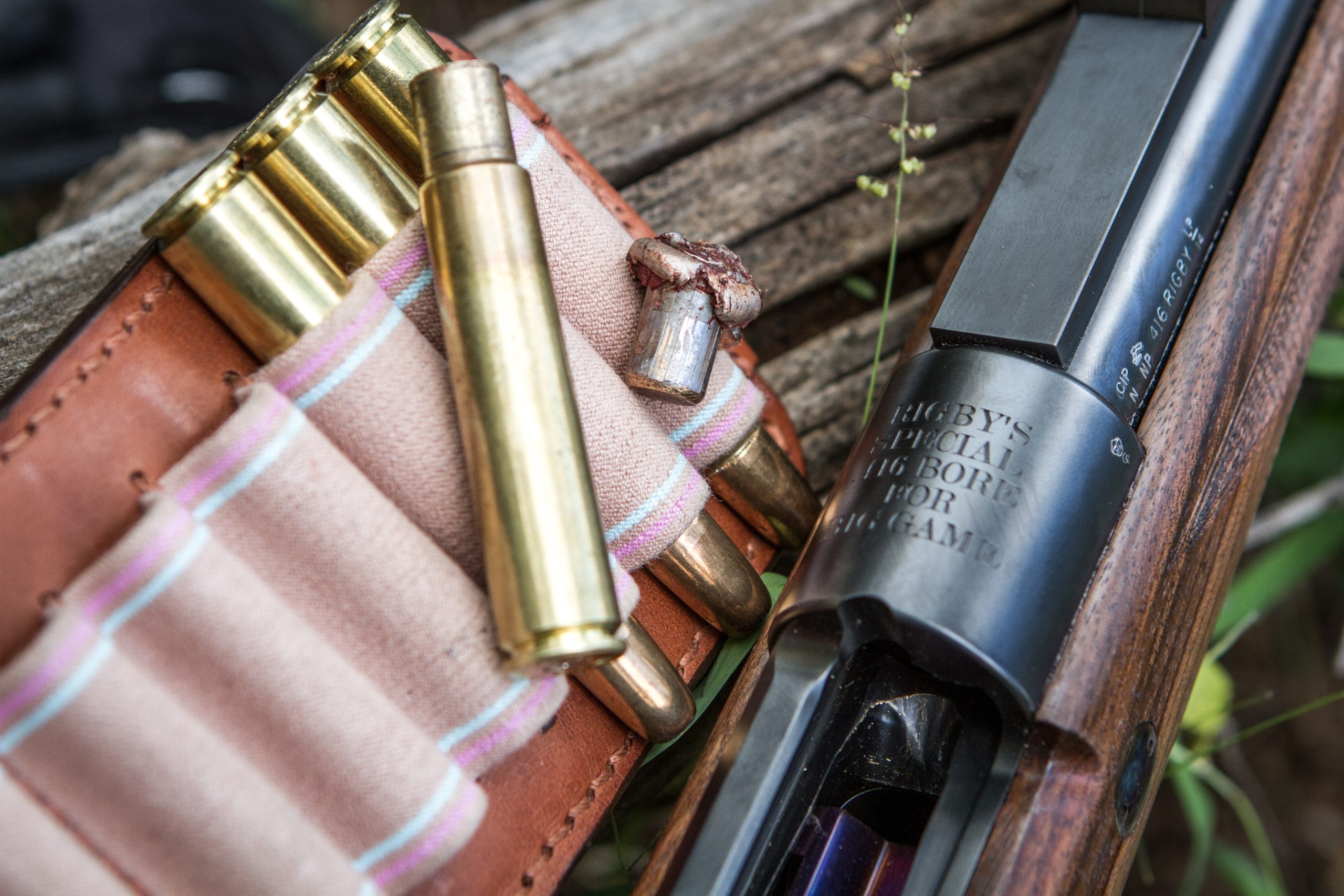“Compact and well-balanced” – the Remington 700 5R Stainless in 223
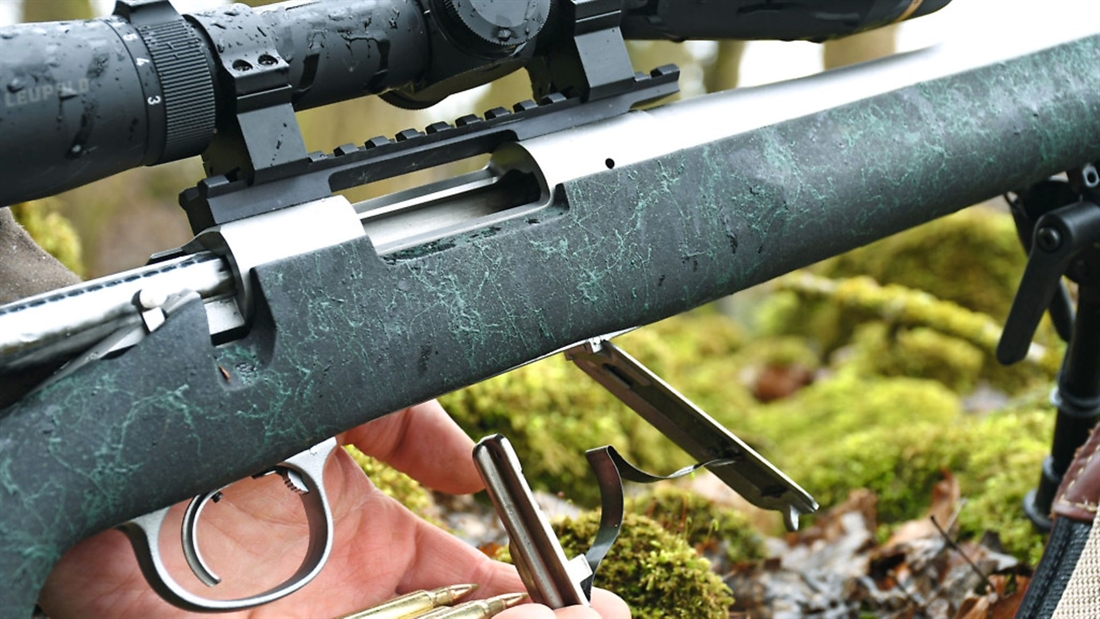
With versatile, easy-clean barrels that produced perfect groups, Chris Parkin found lots to like about the Remington 5R; find out the verdict in this review
IN BRIEF
PROS: The barrel seemed exceedingly versatile for multiple ammunition brands and bullet weights; Easy cleaning; Mechanically sorted action and stock forward of the grip; Great tactile feel; A compact and well-balanced gun
CONS: The trigger was crisp but heavy; The stock is ergonomically disappointing from the action rearward; Quite expensive
VERDICT: I have never doubted the mechanics of a Remington, a brand that has always been reliable for me, but they surely must update their stocks and triggers to remain competitive in the wider market.
REMINGTON 700 5R STAINLESS IN 223
Calibre: 223 on test (308 and 300 Wm also available)
Barrel: Stainless steel, cold hammer forged with 5R rifling
Barrel length: 510mm/20” 1 in 9” twist rate
Overall length: 1005mm/39 1/2”
Weight: 3.98kg/8.84lbs
Muzzle thread: ½”x28tpi
Stock: Green composite with aluminium internal bedding block
Length of pull: 340mm/13 3/8”
Trigger: single stage, set to lightest pull of 1800gr/4lbs
Safety: two stage without bolt lock
Magazine: 5 round internal floorplate system
CONTACT: Raytrade UK Ltd. 01635 253344 www.raytradeuk.co.uk
RRP: £1,379
IN DEPTH
The Remington 700 is a true legend of the bolt-action rifleman’s world. After 56 years of production, however, with very few changes made to anything other than the trigger and stock, it is good to see small updates being made to what is a massively comprehensive range of models and calibres. This Varmint Synthetic VS superficially looks very similar to those of old, but the barrel holds the secrets of the ‘5R’ name – a specific type of rifling which is proposed to hold many benefits.
I will start out by admitting that I have owned and shot more 700s than any other brand or model of rifle, from .222 up to .300 WM, with a 338 Lapua custom-build on one of the actions as well. The action and barrels have always satisfied me, with each capable of realistic accuracy, precision and longevity to meet the demands of its design ethos, even if some of the stocks were a little disappointing in regards to ergonomics.
The older Walker trigger was far superior to the newer X-Mark unit but, sadly, the lawyers got involved and a marksman’s ability to handle their firearms safely was questioned, leading to what may be a more hefty unit for safety, but one that is also heavier for pull.
Cold hammer forging is a great way to mass-produce barrels and, in terms of well-controlled bulk production, I tend to prefer it a little to buttoned barrels. I have no real reason for this other than believing that a badly hammer-forged barrel is easier to reject during quality control which tends to push harder standards of supervision, whereas a buttoned tube can be superficially good, yet more vaguely disappointing in use.
That is how it feels to me anyway. To be fair, this is a rare occurrence, but the one stand-out feature of Remington’s marketing for this gun proved to be utterly truthful.
Unlike a conventional barrel with multiple (often six) square-cut lands and grooves opposing each other, this barrel has five, meaning each land faces a groove. Whether it is this or the more gently angled facets to the lands (which are 110° rather than 90° corners), it is purported to reduce stress on bullet jackets and lengthen barrel life as well as minimising fouling. We shall see…
The claims of better accuracy are very hard to prove on anything other than a statistical basis across many guns, but the US military has long relied upon the M-24 weapon based around a similarly specified ‘700’.
The 20”/510mm barrel begins with a 90° crown within a ½” x 28tpi threaded muzzle and supplied cap. This seemed slim, with 5/8” far more common on larger varmint barrels like this one, but I do like the finer pitch which seems to allow accessories to stay on tight with less applied force. It looks a little like a spigot with a 19mm primary diameter quickly swelling to 21mm before tapering out to 25.4mm/1” at the start of the chamber reinforce, and is tenon-screwed into the action.
Remington’s characteristic recoil lug is sandwiched here for direct transfer into the stock’s inlet and, although utterly functional, it would have been nice to see Remington pin this in position after 56 years of requiring its alignment before torqueing any replacement barrels into position.
The barrel and action both display neat laser etchings of names, twist rate (one turn every 9”), serial number and QR codes to identify the action. This is a good step towards the neater engravings of older guns, rather than the cheaply rolled-in logos of the past 10-15 years that tarnish the seamless tubular styling of the gun.
All the stainless steel is bead-blasted to a satin finish with even texture, with familiar twin-threaded holes atop each action bridge for scope mounting. Raytrade supplied a Picatinny rail allowing me to use both daylight and night vision optics without any hassle, but mounting a scope to any Remington 700 or its genetic offspring is never difficult, with countless options available.
The bolt carries twin lugs for a 90° opening arc, allowing its 102mm stroke to withdraw, extract and eject the spent case from the chamber. It’s a push-feed bolt-face with recessed circlip extractor and sprung plunger ejector within the “three rings of steel” Remington so famously boasted about five decades ago, and which still makes a strong action today.
A gas escape port to the right-hand side protects the shooter from direct blowback in case of a burst primer or separated case head.
Engine turning of the polished shaft gives a smooth stroke with minimal play and little likelihood of binding through its travel. A modest 50mm handle length terminates with the famous ‘fly’s eye’ knob.
Extended bolt-handles are a mixed blessing – if too long they over-torque the shaft and make it stutter. On a sporting or varmint rifle, rather than some kind of fast-fire gun, I kinda like the old-school charm of this original trademark. A steel shroud caps the bolt at the rear with action status visible from the rearmost extent of the firing pin. It is also tactile because, when fired, it drops inside the shroud. The safety to the right doesn’t lock the bolt or pin, but interrupts the trigger and is operable silently under thumb to avoid spooking game.
The X-Mark Pro trigger sits directly below the bolt’s ‘fly’s eye’ so it’s quick to flick your index finger up from the trigger, opening the action with minimal hand movement. Why change what has worked for so long ergonomically?
The X-Mark shows no adjustment inside the stock but is weight-adjustable with a single Allen key at the top of its smooth, curved blade. The blade is fingertip sized and comfortable but small for gloved hands, even if the surrounding guard allows plenty of space.
Good or bad, the trigger arrived from the factory breaking beyond the measurement limits of my scales, but when fully wound off it weighed in at 1,850g or 4lb. It was crisp and predictable, and I shot just fine with it, but most users will consider this quite heavy for minimum adjustment.
It was great with light gloves in cold conditions, when sensation-deprived fingers were offered good feel; however, if you snatch at it, it’s going to jerk the whole gun, so remember, stable position and squeeeeeeeze!
This shorter action of the two sizes Remington make shows a BDL floorplate system allowing you to clip rounds into place through the ejection port, with any excess ones emptied by pressing the catch in the front of the trigger guard to drop free.
You cannot lose a floorplate, which is great, but in the smaller .223 cases it is quite fiddly to load. They won’t squeeze in onto the sprung follower unless aligned correctly, but with the bolt fully rearward they easily catch toward the rear of the magazine well. I found it easier to do with the bolt pushed slightly forward, assisting alignment. These are quirks you get used to, but does the modern market want quirks?
Bolt release is with a catch inside the guard, and all parts of the aluminium floorplate insert neatly into an inlet on the stock’s underside.
The 700 is a mix of classic design with modern manufacturing methods. I feel it has aged well and still like its heritage – very few designs last for so long with such minimal alteration, and in hands other than those of a professional tester who sees competitors day in, day out, it really shows no weaknesses.
Love or hate the action, (I do have a soft spot for them), the stock is showing its age. It is an odd contrast of excellent materials and manufacture with what seem to be outdated ergonomics. It’s a true composite design I am very familiar with, and shows an aluminium bedding block within the inlet to mate harmoniously with the action’s underside. Twin action screws nip it in position through pillars, so it is all impervious to realistic atmospheric variables.
If I’m being finnicky, there is a minute profile mismatch between the bedding block and the footprint of the action, but V-grooves do pull it central. It’s not as perfect as synthetic bedding, but it’s certainly one of the best set-ups out there.
There is no full-length aluminium spine to the stock, but its delightful varmint profile fully floats the barrel with plentiful stiffness to avoid any unwanted contact applied by variable shooting positions. It has a lovely texture to the green/black finish that is tactile, warm to the touch and does not sound hollow and clunky if tapped.
It’s not flat underneath but shows twin sling studs for secure bipod and sling mounting, with a hand-filling 52mm/2” radiused width for relaxed hold or support from a bench bag. So far so good, but towards the rear is where you will like or dislike the design according to your needs.
Short length of pull at 340mm/13 (3/8”) is almost childlike in size, and the 6mm (¼”) thick recoil pad is bonded on so it’s not simply a case of adding spacers between. It has a firm grippy texture and fits nicely into your shoulder pocket with decent head alignment from the slender comb, but you are left with your head and face close to the optic.
The grip shows a bulky palm swell to both sides and is so short your hand is either restricted forward in location, very close to the trigger, or left with the fourth finger just floating in space.
So, why the hell have they not dealt with HS Precision and had new moulds made suited to the 21st century? You may feel the gun suits a benchrest varminter more than a sporting shooter resting in improvised circumstances, and to some extent I do agree, but there are no options to the stock.
In the inspirational world of full-custom competition rifles where no expense is spared, the only place you really see a stock of these dimensions, and perhaps no shooter/grip contact at all, is a short-range benchrest ‘light gun’, sometimes known as a ‘race gun’, where free recoil is the order of the day and actual contact with the operator is nearly zero.
With both daylight and night vision scopes at my disposal and several ammunition brands and styles, I was set up well with this gun. The handling character is compact and solid, well-balanced even with a lightweight mod such as the Monolyth on board.
I shot bullet weights from 40-69gr through the gun and all worked unusually well. There were still highlights, but nothing at all was a no-go and that’s quite unusual for any rifle – they all tend to have likes and dislikes in varying degrees.
PPU FMJ was holding 45mm at 100m for a five-round group and the first clean showed no copper particles to have been shaved from the bullet, nor brass from the case, during the smooth feed from the floorplate magazine. Clearly, no worrisome burrs had passed through the machining process of either component making contact with the ammunition.
Single rounds dropped onto the magazine follower, though the ejection port did need a slight twiddle to slide into the chamber, but this is a general rule in most rifles for small cases relative to bullet diameter and meplat.
Switching over to 55gr Remington AccuTip for my primary zero was a hint towards the likely varminting role I intended for the rifle, and with speeds of 925m/s (3,036 fps), things looked good. This ammunition, like all the premium brands following it, held the magic 25mm at 100m groups for five shots and, most importantly, the zero never wavered even when hot.
I thought the other brands may show favouritism, but Hornady’s ever-reliable 55gr Varmint Express shot just as well into the same zero point. Its 861m/s was notable due to the 3m/s extreme spread over five rounds, giving me 2,829fps (although this was somewhat down on the packet’s claim of 3,240fps). Winchester suggested an identical speed for their 55gr ballistic tipped Varmint X but, again, the 850m/s recorded (2,789fps) was significantly lower.
I stayed on brand and concentrated on the Remington AccuTips, which wisely claimed no velocity on the packet to be disagreed with. Match ammo went to 62 Remington, which was a little slower at 829m/s (2,721fps) but equally consistent, staying within that benchmark 25mm group, near as damnit to 1 MOA. I was now determined to prove the barrel wrong, so to speak, and tried odd bullet weights from handloaded ammunition to exceed the 9” twist rate’s likely preferences, but 40gr Sierra Blitzkings, 69gr TMK’s and older 55gr lead-nosed Blitz’s all stayed, almost boringly, to plan.
A gun that shows this much versatility and no prima-donna choosiness would encourage me to handload to full extents of powder tolerances, primer changes and COL experimentation. My own personal ballpark precision 55gr handloads from my own custom Rem 700 .223 were cloverleafing, repetitively.
Sadly, such versatility from the action and barrel required very careful positioning and trigger control, that might not be so easy for new shooters. I can see the trigger, if not the stock, getting switched out for an aftermarket version that offers equally crisp operation with lighter weight.
Handling with top-heavy night vision scopes was aided by the grippy nature of the stock’s finish and, to be fair, standing shots from sticks with compromised upright head positions and short eye relief optics may have benefitted the 5R’s short length of pull.
Shot prone with daylight optics, however, you overwhelmingly felt the short length of pull. Shooting from a bench was fine, with minimal recoil easily soaked up without any muzzle jump in the format I shot from. And loading the floorplate got easier as I became more accustomed to it, but was always hard in gloves during a cold winter night’s foxing.
The lack of ammunition fussiness had really pleased me with regards to Remington’s cold hammer-forged barrel and obviously well-controlled heat treatments to stabilise the steel afterwards, but the greatest surprise from the 5R barrel was its cleaning characteristics. The vast array of ammunition used and the careless shooting style would leave me expecting plentiful soot, carbon and copper in the barrel, but it almost wiped clean.
Yes, that is right – three wet patches and two five minute soaks had the barrel clean, perhaps not to borescope standards, but to a far higher standard than most test guns.
Also of interest was the ‘cold-bore shot’. It hit the mark every time from a dirty barrel and, even after the full clean, only took one round to stabilise back to exactly where it used to be.
As I write this article, there is some confusion over the financial state of Remington after a very productive 200-year history, and I hope it is all sorted out. Remington is the brand that brought me to the world of serious rifle ownership, and it is great to see small steps being made.
The mechanics of the action have stood the test of time with only subtle manufacturing tweaks. The 5R rifling impressed me far more than I expected, yet the stock and trigger are equally disappointing and still behind the times.
You get safety at the expense of control from the X-Mark Pro, and superb build quality from the front end of the stock but poor ergonomics to the rear. I own and shoot these guns and forgive them their weaknesses, but am well aware of them and how they affect me as a shooter of many other guns. You have to be competitive in the market and the stock is as much a fail for me as the barrel is a gain.
AMMO USED
Remington 55gr AccuTip and 62gr BTHP Match
Raytrade UK Ltd. 01635 253344 www.raytradeuk.co.uk
Hornady 55gr V-Max Varmint Express
Edgar Brothers 01625 613177 www.edgarbrothers.com
Winchester 55gr Varmint X
Browning UK 01235 514550 www.browning.eu
Sierra Bullets 55gr and 69gr Blitz and TMK bullets, Ramshot Xterminator Powder & PPU 223 Brass
Henry Krank & Co. 0113 256 9163 www.henrykrank.co.uk
ALSO USED
Tier-One Monolyth Sound Moderator
Tier One 01924 404313 www.tier-one.eu
Leupold VX-5HD CDS-ZL2 3-15×56, £1460. PRW scope mounts, from £84
Viking Arms 01423 780810 www.vikingarms.com
Pulsar Digisight Ultra N355
Scott Country International 01556 503587 www.scottcountry.co.uk
Related articles
Tikka T3x Ace Review
Tikka’s Ace series of rifles combine a smooth T3x action, precision trigger and a highly adaptable chassis system, making these guns an outstanding choice for competitive and practical shooters. Bru...
By Time Well Spent
Get the latest news delivered direct to your door
Subscribe to Rifle Shooter
Elevate your shooting experience with a subscription to Rifle Shooter magazine, the UK’s premier publication for dedicated rifle enthusiasts.
Whether you’re a seasoned shot or new to the sport, Rifle Shooter delivers expert insights, in-depth gear reviews and invaluable techniques to enhance your skills. Each bi-monthly issue brings you the latest in deer stalking, foxing, long-range shooting, and international hunting adventures, all crafted by leading experts from Britain and around the world.
By subscribing, you’ll not only save on the retail price but also gain exclusive access to £2 million Public Liability Insurance, covering recreational and professional use of shotguns, rifles, and airguns.
Don’t miss out on the opportunity to join a community of passionate shooters and stay at the forefront of rifle technology and technique.



